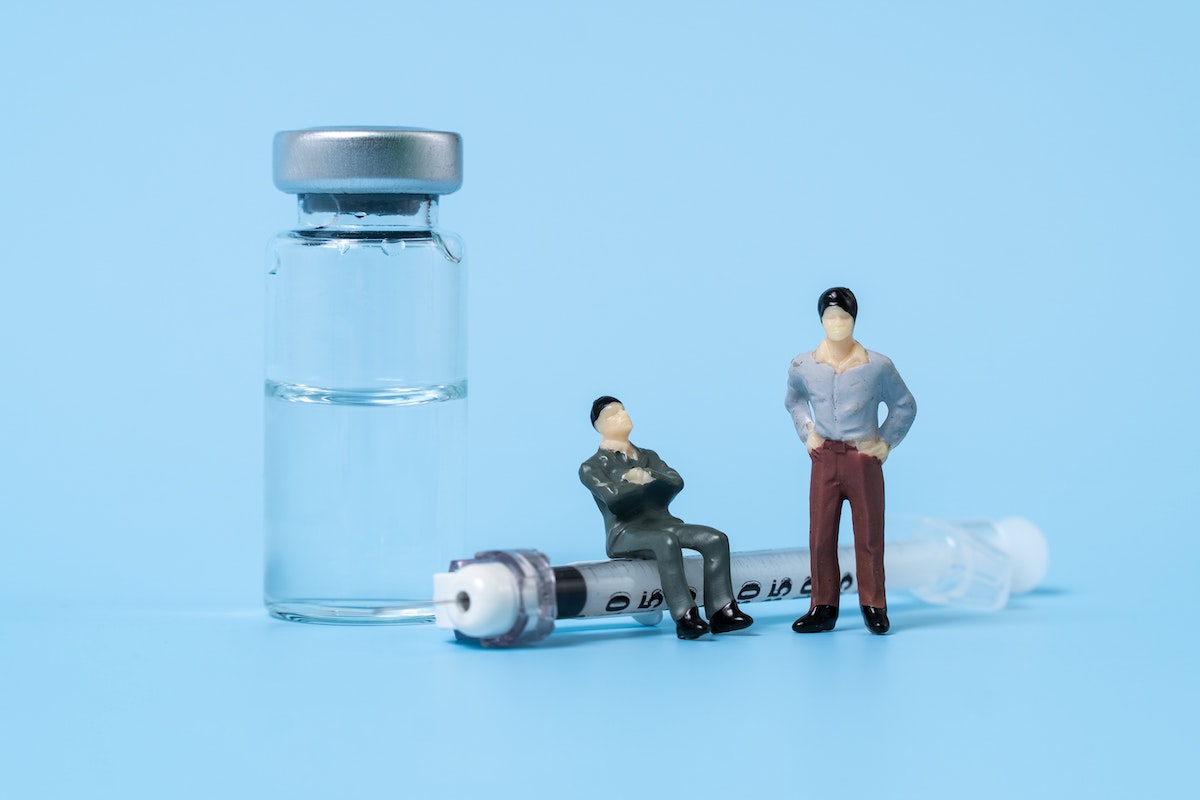Poodle | How Diabetes Put Santa Barbara on the Map
Landmark Senate Bill Close but No Cigar on Insulin Cost Cap

SHOOTING THE BREEZE: Is that a diabetes syringe in your pocket, or are you just happy to see me? That question was very much on my mind this Sunday as I was trying to celebrate the passage of the Inflation Reduction Act — okay, I admit the name’s a stretch — perhaps one of the most historic and sweeping pieces of legislation passed by the Senate this side of the Pleistocene era. Instead of focusing on all the things the bill did accomplish — $370 billion in tax credits for clean energy projects, minimum tax rate of 15 percent established for big corporations worth a billion or more, and a maximum cap of $2,000 a year for 10 prescription drugs — I found myself fixating on what it didn’t include.
Mr. Buzzkill, meet Mr. Party Pooper.
What didn’t make it across the finish line was the desperately needed price-tag relief for the 8 million insulin junkies who must take a drug invented 100 years ago every day of their lives if they wish to continue eating and breathing. While I have been spared this lethal challenge where my blood sugar levels are concerned, about 6.7 million people die from complications of diabetes each year.
If passed, the measure would have limited monthly insulin payments to people with private insurance as well as people on Medicare to no more than $35 a month. What didn’t pass was relief for people on private insurance. The cap for Medicare recipients, however, did.
In the United States, the insulin market is controlled — dominated is a more precise word — by three major pharmaceutical companies. A vial of insulin that cost $21 in 1999 cost $323 in 2019. For many diabetics, a single vial is not sufficient to get them through the month. Only three companies and prices triple? I’m sure there’s a reasonable explanation. Until I hear it, the word “collusion” flutters unbidden to mind.
Insulin is a treatment, not a cure. Many moons ago, I shared the sunrise shift for hyperbaric therapy at the Santa Barbara Wound Center — perhaps the least euphemistically named health-care facility in town — with a fit-looking young dude whose feet weren’t getting the oxygen they needed. That’s one of the things diabetes does. The hope was that 40 sessions in the oxygen tank — delivered at pressures more typically found 30 feet under the sea — might magically jumpstart his body’s ability to distribute the oxygen his lungs were breathing in and get it to his extremities. In his case, that didn’t happen. I was in the room when a guy in a white lab coat gave him the news. They were off discreetly in a corner. I didn’t hear a word. I didn’t have to. The next stop was amputation.
They don’t make get-well cards for something like that.
To be fair, the Senate vote was encouragingly close. To include the price cap for insulin, 10 Republicans had to vote for an arcane but critical procedural waiver. The vote was three short. But seven Republicans did vote for the waiver that would secure insulin for those with insurance policies at no more than $2,000 a year.
Sign Up to get Nick Welsh’s award-winning column, The Angry Poodle delivered straight to your inbox on Saturday mornings.
Among these seven were some of the most right-wing, shoot-first-aim-later throat-punchers the GOP has swimming in its moat. People like shameless election deniers Josh Hawley from Missouri and Louisiana’s Bill Cassidy and John Kennedy.
A lot of diabetes happens to southern Republicans. Like diabetics everywhere, many of these voters are forced to short-change their own lives or those of their children by rationing their insulin. Come election season, I wouldn’t want to have to explain to these voters why I could have helped them but didn’t.
They don’t make get-well cards for that either.
Just to be clear, the Senate did pass a watered-down version of an insulin price cap. People on Medicare will benefit; people on private insurance will not. But this legislation is coming back in another package.
I am fixating on insulin because it — and diabetes — put Santa Barbara on the map. If it weren’t for diabetes, it’s highly doubtful Santa Barbara would look the way it does. A little more than a century ago, one of the world’s leading diabetes researchers — Dr. William David Sansum — got off the train in Santa Barbara to fill the shoes left by the world’s foremost authority on the subject, Dr. Nathaniel Potter, who had recently died. In 1922, Sansum would be the first American doctor to create and administer insulin for a sick patient. That patient lived to be 90.
Word got out, and every diabetic in the country with enough money to pay the train fare headed to Santa Barbara. To accommodate this onslaught, historian Walker Tompkins claims, all of Santa Barbara’s best hotels — El Encanto, the Upham, and the Samarkand — came into existence. Among these visitors was an upright New Englander named Bernhard Hoffmann, whose daughter had diabetes, then a death sentence.
More than anyone, Hoffmann is responsible for Santa Barbara’s architectural fixation with all things red-tiled and Moorish. He bought Casa de la Guerra and transformed it into the Spanish fandango of El Paseo. He rebuilt the Lobero Theatre. And to make sure others followed suit, Hoffmann created the Architectural Board of Review (ABR). For this, he and the ABR would soon be reviled as “communistic” in the local press. Hoffman got the picture and left town.
But by then, insulin could be produced at commercial scale; his daughter was safe.
With the next vote on insulin, everyone else will be too.
Support the Santa Barbara Independent through a long-term or a single contribution.



